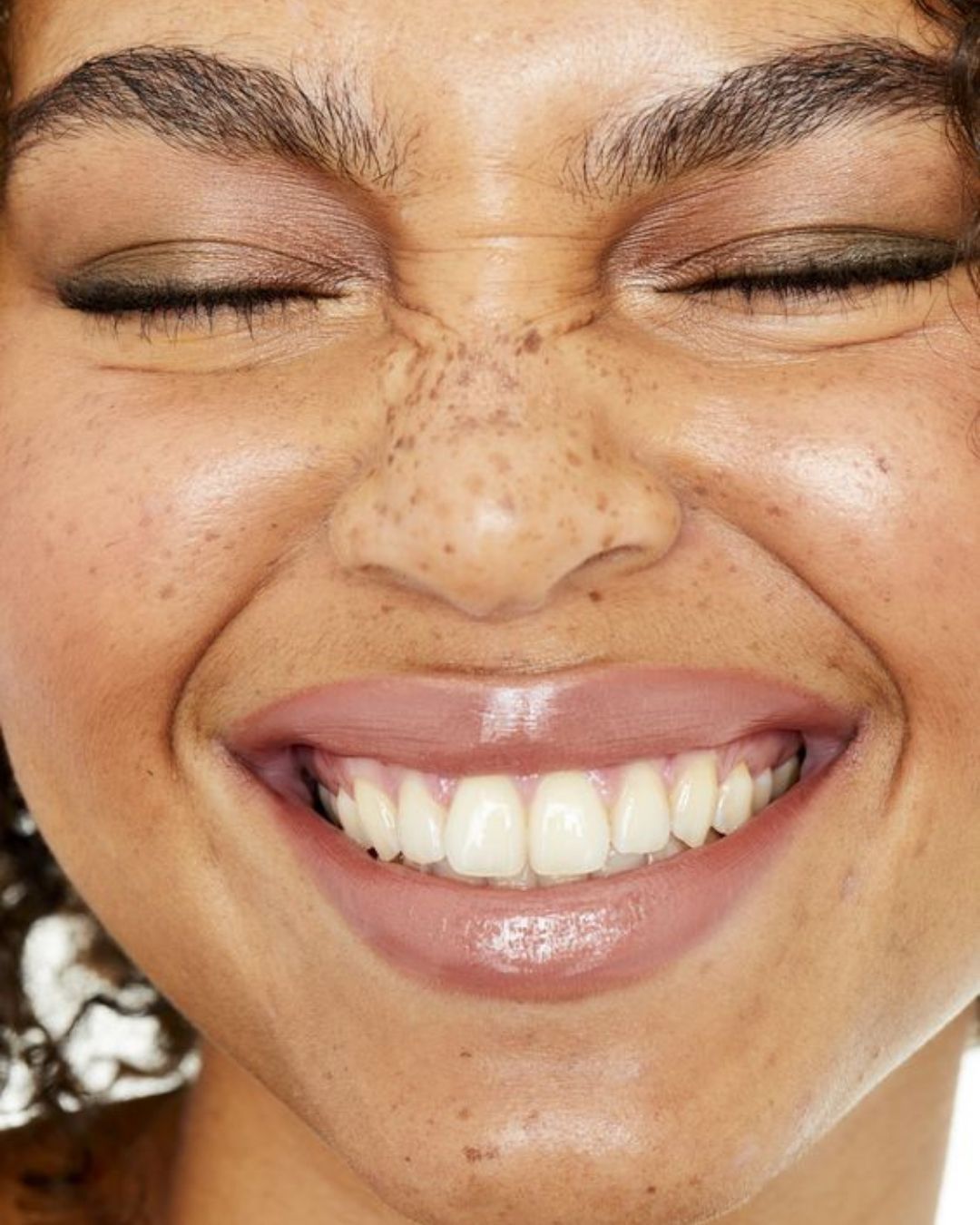
It's sunny: beware of hyperpigmentation A few tips on how to prevent and minimize dark spots
Do you ever look closely at yourself in the mirror with a bare face and notice dark spots or discolorations on your skin? Especially during the beautiful season, we’d like to forgot foundation and simplify our entire skincare routine, but those marks make us feel a bit uncomfortable, so we resort to makeup to try to minimize them. We would love to make them disappear with a miraculous product. Unfortunately, just like with enlarged pores and acne, there’s no magic wand that instantly and permanently makes hyperpigmentation disappear, but there are useful treatments to brighten and even out skin tone.
What is Hyperpigmentation?
Hyperpigmentation is a general term indicating an excessive production of melanin, the pigment that determines the color of hair, eyes, and complexion. When this pigment accumulates in the epidermis, patches or spots that are darker than the natural skin tone appear. It is a common condition that can affect all skin types and ages and can be divided into three main types:
- Solar Lentigines: also known as age spots, they are caused by excessive sun exposure without adequate precautions and protections. They appear as small dark spots due to a concentration of melanin on the skin's surface and are commonly found on the face, hands, arms, and chest.
- Melasma: this is a type of facial hyperpigmentation that appears mainly on the forehead and cheeks as brown or grayish patches. The triggers are hormonal changes due to pregnancy, thyroid issues, or the use of certain medications.
- Post-inflammatory Hyperpigmentation: this occurs following cuts, burns, or acne. When the skin undergoes lesions or inflammations, the healing process can be accompanied by an overproduction of melanin that darkens the affected area.
What Causes Hyperpigmentation and Wow to Prevent it
Hyperpigmentation is multifactorial. There can be genetic, metabolic, hormonal, and environmental triggers. Among the most common causes of dark spots are excessive exposure to the sun and UVA/UVB rays, wounds and inflammations on the skin such as acne, eczema, bruises, cuts, burns, and chemical exposure, genetics, age, and hormonal changes. As with most skin care problems, prevention is very important. There are small measures we can follow to limit the appearance of dark spots. The first and most important is to limit sun exposure, a trigger for melanin production, which in turn is responsible for the appearance of hyperpigmentation. It is necessary to protect the skin from the harmful effects of UVA and UVB rays by applying an effective sunscreen with SPF 30 or higher (even on cloudy days!). This will also help to prevent oxidative stress that favors premature skin aging. The second measure is to take care of wounds, scratches, cuts, irritations, or acne bumps as soon as they appear, keeping them clean and free of bacteria. Finally, though it may seem obvious, it is essential to maintain a consistent skincare routine. To avoid causing irritations and melanin production, we must ask ourselves if we really need a product before adding it and if it could be too aggressive for our skin type. It's better to consult a competent doctor for an evaluation.
How Can Hyperpigmentation Be Treated?
Hyperpigmentation can be treated in various ways. A dermatologist can help diagnose the cause and offer the best action plan for targeted and effective treatment. They might recommend a chemical peel or a laser treatment. The first method involves applying an acidic solution (such as AHAs, including mandelic, salicylic, lactic, and glycolic acid) to the area to exfoliate the skin, removing dead cells and stimulating their renewal. The result will be an improved appearance of the skin. Laser treatment involves frequently passing a high-energy light over the areas affected by dark spots and has proven effective in treating the most stubborn pigment spots.
What are the Most Effective Active Substances Against Dark Spots?
Consistently applying an anti-dark spot cream or serum is a great way to prevent their appearance on the skin and treat existing discolorations. The most commonly used active substances for hyperpigmentation are those that act on melanin production. Let's look at some that help restore a bright and even complexion:
- Vitamin C: it is an antioxidant that protects the skin from environmental aggressors causing inflammation but also inhibits the activity of the enzyme that produces melanin, namely tyrosinase, preventing the formation of acne scars and dark spots while gradually reducing existing ones.
- AHA Acids: alpha hydroxy acids, such as Salicylic and Mandelic acids, have an exfoliating action. They fight impurities, promote cell renewal, and remove dead skin cells.
- Niacinamide: it is a form of vitamin B3 that can help fade hyperpigmentation. It is excellent for calming inflammation and improving the appearance of spots.
- Kojic Acid: it acts on melanocytes, exerting an inhibitory effect on melanin synthesis and has antioxidant properties.
- Azelaic Acid: it helps to clear pores and refine the skin's surface. Additionally, azelaic acid is also a powerful antioxidant and reduces skin factors causing acne, uneven skin tone, and signs of aging.
- Retinoids: thanks to their exfoliating properties, they stimulate skin regeneration, making the skin texture more uniform. They can help with acne by shrinking sebaceous glands and accelerating cell turnover, but they can be irritating for more sensitive skin. Products containing retinol and retinoids should be gradually incorporated into the night skincare routine (during the day, UV rays increase the risk of photosensitivity).

























































